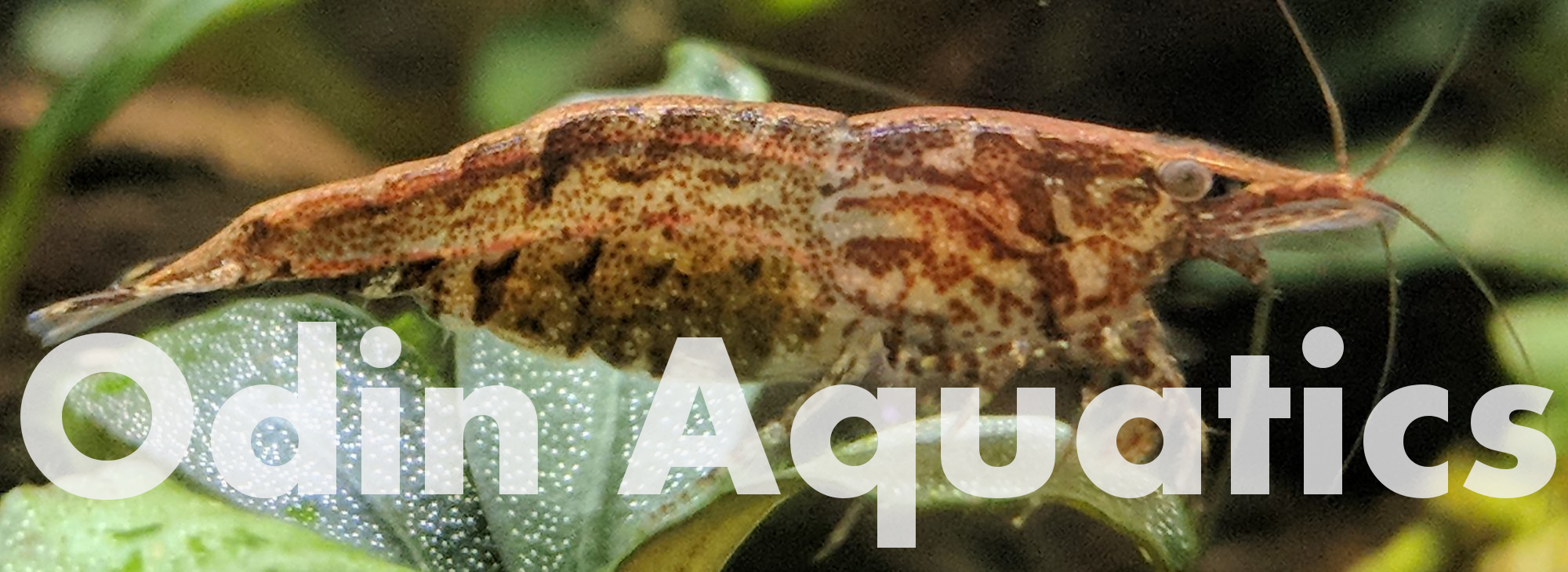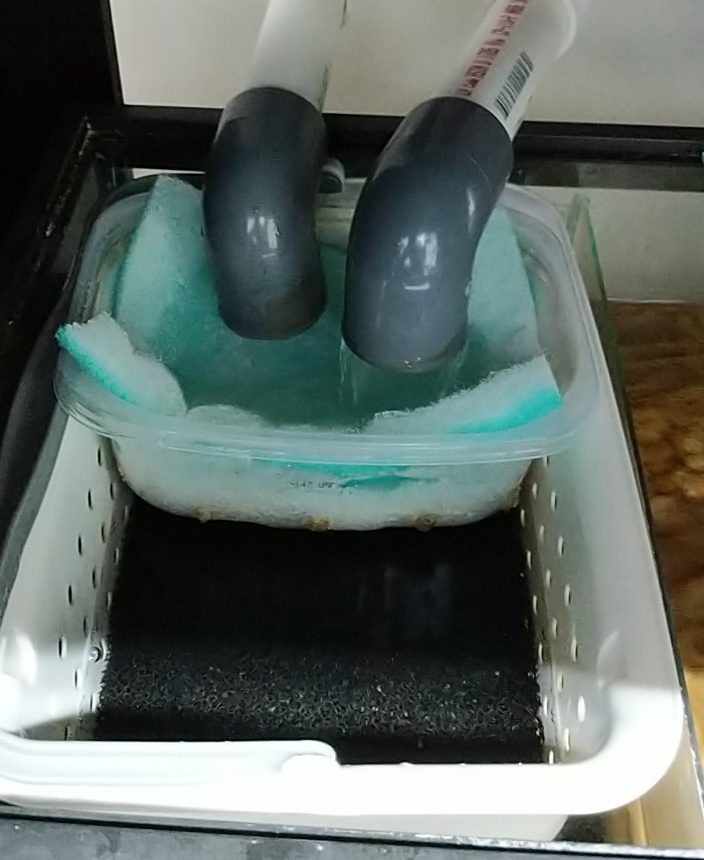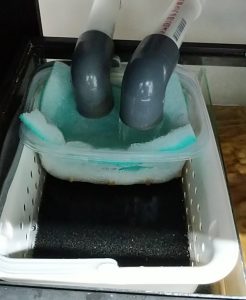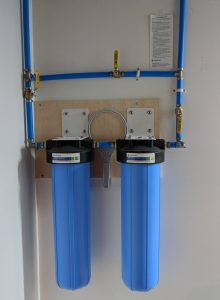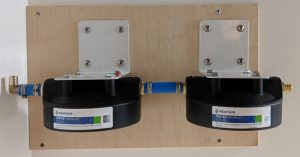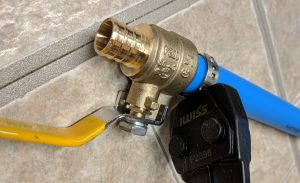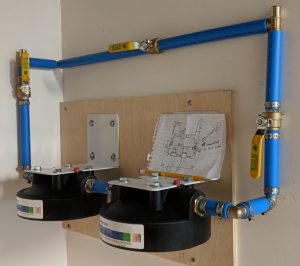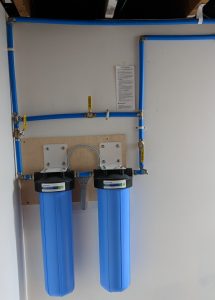Design
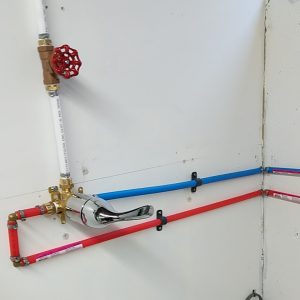
There are a few different ways that fishkeepers with many tanks choose to setup their water change systems. The optimal design for any particular fish room depends on the incoming water source, space available, and volume of water that will need to be regularly changed.
If you are on a well, you probably don't have to worry about paying a water bill or treating your water for chlorine or chloramine. Many people who have well water choose to run a continuous drip system, where new water is constantly being added. Since I have city supplied water that needs to be dechlorinated, I have to treat all water going into my tanks. So a continuous drip was not an option in my case.
Another common design is to use a large reservoir to store treated water. I didn't want to go that route because my space is somewhat limited. I needed a system that could give me filtered, tempered water on demand. And I wanted to be able to control flow to each tank using manual valves, and have drilled overflows to prevent flooding in case I forget I'm filling a tank (this happens a lot).
Fill System
Water coming into my fish room first runs through a dual-stage whole house filter system. The temperature of the water going to the tanks is controlled by a Delta shower valve , and the flow is controlled by a Pentair gate valve. The first section of the system is plumbed with PEX, because it was easy to tap into my existing plumbing.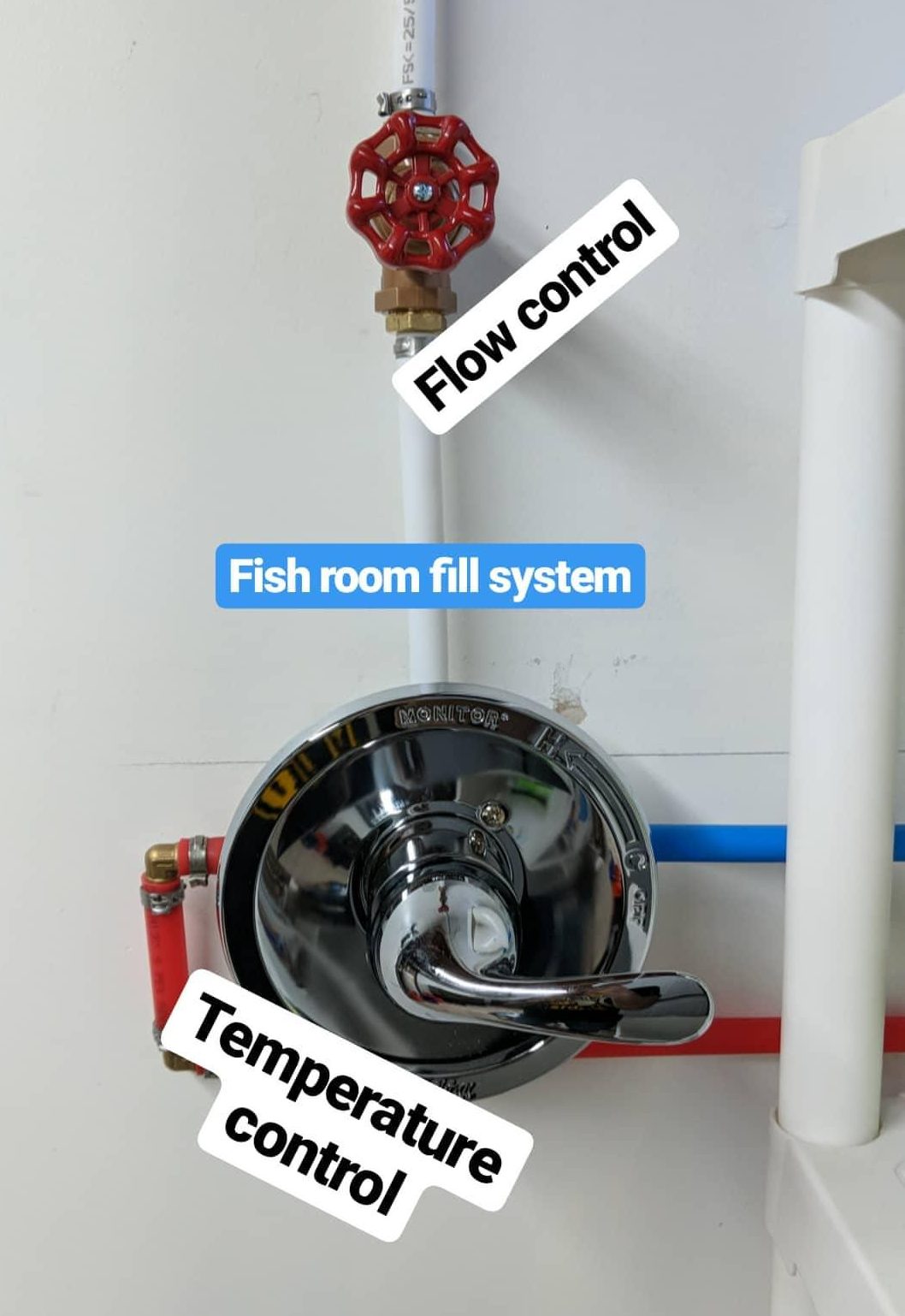
I added a threaded 25 psi pressure regulator made for sprinkler systems to reduce the pressure in the line going to the tanks. This prevents pressure from building up at the individual tank valves and allows me to use irrigation compression tubing in some sections.
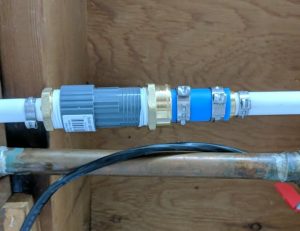
Each tank has its own fill line controlled by a Pentair gate valve with hose threading on the output side. I can screw on any hose attachment, including a Python hose adapter. My smaller tanks have a drip irrigation faucet fitting with irrigation tubing so I can do gradual water changes.
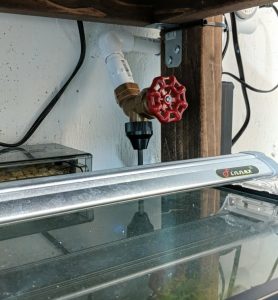
My larger tanks are fed directly from the faucets, with flow controlled using a combination of the valve at the tank and the system's main gate valve.
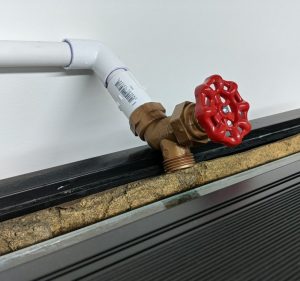
I can run slow, simultaneous water changes on several tanks at once with this system, or I can change out a lot of water on one tank very quickly. But the best feature is that I never have to fill and carry a bucket of water across the room! To quote the great rainbowfish keeper Gary Lange: "Gary don't carry", and neither do I.
Drain System
When it comes to draining water out of aquariums, there are obviously a few ways to go about it. You can use the old hose and bucket method. Or you can make the upgrade to a Python Clean and Fill System (which I use to perform water changes on my client's tanks). Or you can plumb the tank with a drain, either permanently by drilling a hole for a bulkhead, or temporarily using PVC. I prefer to drill aquariums whenever possible. A drilled overflow will never lose siphon the way an over-the-top PVC built one could. I wrote this post and this other post about drilling tanks if you are planning to try it.
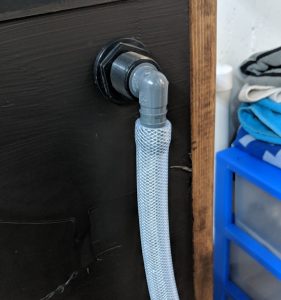
Each drilled tank feeds a flexible braided hose that connects to a 1.5" PVC drain line which runs around the perimeter of the room. Below, you can see the PVC drain manifold underneath my 29 gallon rack.
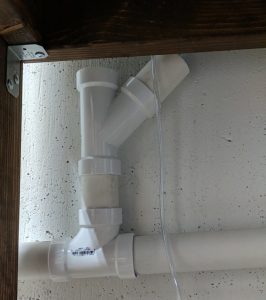
There are a total of 4 sanitary tees spaced out along the drain line, and each can be expanded to handle multiple drains. The pipe starts about 12" off the floor, and runs about 20 feet around the room with a gradual decline to the floor drain.
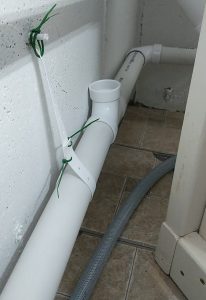
You can see the 90 gallon sump overflow hose alongside the main drain pipe in these two photos .
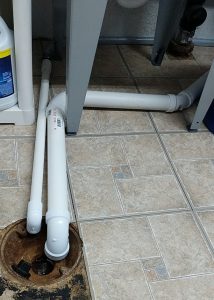
This system took a couple months of planning and tinkering to implement, and I learned a lot about plumbing a fish room in the process. During that time I was constantly looking at examples of other people's systems to help influence my own. Hopefully seeing my design is helpful to someone else in the process of setting up a water change system.

